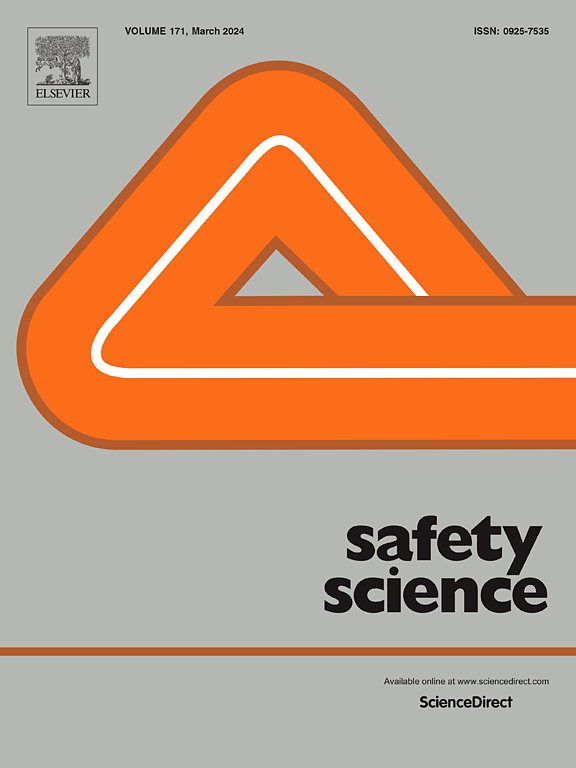Study on the longitudinal airflow velocity and maximum temperature of the smoke layer under the ceiling in naturally ventilated inclined tunnels
IF 4.7
1区 工程技术
Q1 ENGINEERING, INDUSTRIAL
引用次数: 0
Abstract
This study investigates the inlet airflow velocity and the maximum temperature of the smoke layer underneath the ceiling in naturally ventilated inclined tunnels by means of CFD simulations and theoretical analysis. The findings of this research indicate that the chimney-effect induced inlet airflow velocity is proportional to the power of the tunnel height difference () and fire heat release rate (HRR). However, the smoke stratification occurring downstream of the fire source exerts a significant influence on the inlet airflow velocity. It is also illustrated that the maximum temperature of the smoke layer underneath the tunnel ceiling highly depends on the HRR and tunnel height difference, rather than being solely determined by the tunnel slope. The position of the maximum temperature is found to be closely related to the tunnel height difference, but independent of HRR. A predictive model has been devised to estimate the maximum smoke temperature underneath the tunnel ceiling. Comparative study of the smoke maximum temperature between naturally ventilated inclined tunnels and longitudinal ventilated horizontal tunnels shows that the influence of fire heat release rate on the smoke maximum temperature of inclined tunnels is less pronounced than that of horizontal tunnels.
求助全文
约1分钟内获得全文
求助全文
来源期刊

Safety Science
管理科学-工程:工业
CiteScore
13.00
自引率
9.80%
发文量
335
审稿时长
53 days
期刊介绍:
Safety Science is multidisciplinary. Its contributors and its audience range from social scientists to engineers. The journal covers the physics and engineering of safety; its social, policy and organizational aspects; the assessment, management and communication of risks; the effectiveness of control and management techniques for safety; standardization, legislation, inspection, insurance, costing aspects, human behavior and safety and the like. Papers addressing the interfaces between technology, people and organizations are especially welcome.
 求助内容:
求助内容: 应助结果提醒方式:
应助结果提醒方式:


